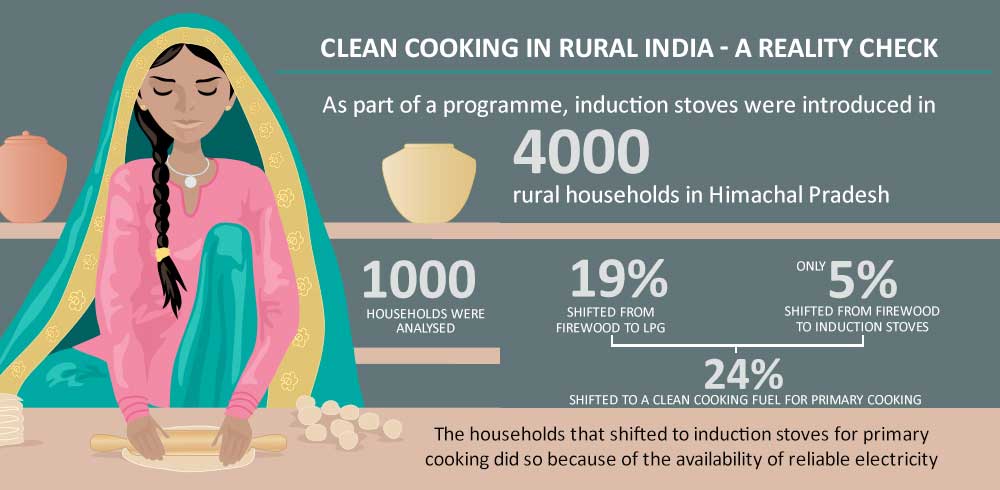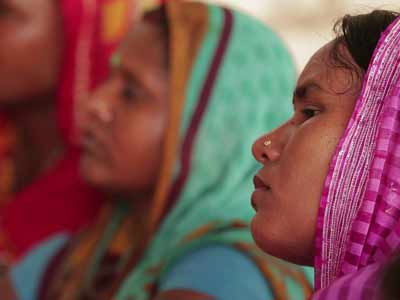Complete penetration of clean cooking fuel and cookstoves in rural India requires a multi-pronged approach

Oil and gas marketing companies recently deferred their loan recovery under the Pradhan Mantri Ujjwala Yojana by six months. Indian Oil has stated that "Paying the market price for the initial few (cooking gas) refills is an additional hurdle that was coming in the way of their (beneficiary families') shift towards cleaner fuel, resulting in periodic slip-back to biomass". This has not come as a surprise to those who have been working in the rural household cooking energy sector and have witnessed continuing fuel stacking (mixed fuel usage) even in Ujjwala beneficiary households.
The concerns pertain to the cost as well as reliability of LPG supply and whether provisioning of LPG connections alone will suffice to shift such households from biomass burning to clean LPG. In the last Union budget, the Ujjwala target was increased to 80 million households by 2020 from the earlier target of 50 million by 2019. In addition, it is reported that a programme to distribute millions of electric/solar induction cookstoves (or solar stoves) in rural areas is also on the cards. Here, the model would be that of UJALA (Unnat Jyoti by Affordable LEDs for All) scheme wherein prices of LED bulbs were brought down drastically through bulk procurement. These are indeed ambitious and well-intentioned programmes with far reaching impacts. However, the on-ground conditions are not simple enough for the distribution of electric induction/solar stoves alone to suffice. Cooking habits and economics are also at play here.
Multiple factors affect clean cooking choices
TERI has been working in villages across the country for decades, focussing on clean cooking and electricity. It is evident that economics i.e. prices of cookstoves and fuels determine a particular fuel choice. Admittedly, collection of fuelwood/biomass and their health costs put a huge burden on women, but as such fuels are either free or low-priced in most cases, the economics work out favourably for the household. Moreover, the woman’s time and health impacts of biomass burning are not accounted for in such calculations.
There is also the issue of reliability. Cooking has to be undertaken at a certain time daily. Presently, the on-demand supply of LPG, especially in far flung areas, is still not that well established. The situation is akin to those times in cities when double cylinder LPG connections were not the norm and there was no question of piped gas. In those days, even in urban households, LPG was used sparingly and most of the cooking was done using kerosene or fuelwood. Same is the case with the rural India today where, on account of basic economics, while LPG is an aspirational fuel, it is biomass that helps prepare two square meals a day; day after day.
Weighing the electric stove option
Will the electric/solar stoves automatically address these challenges? Let us look at the reliability of supply and quality of electricity first. Undoubtedly, with the Deen Dayal Upadhyay Gram Jyoti Yojana (DDUGJY) and Saubhagya programmes, rural and rural household electrification is taking place at a fast pace. But is the infrastructure, including rural distribution transformers, designed to take this kind of load – especially if a sizable number of electric cooking devices are switched on simultaneously during the evening peak hours? And what about affordability for low-income families? Would they be in a position to pay for the three units of electricity consumed by the electric stoves daily?
TERI carried out an impact assessment in Himachal Pradesh where it had disseminated 4,000 induction stoves. Even in a state with high electrification and good economic indicators, the study showed that only five per cent households shifted from traditional mud stoves to induction stoves and 52 per cent households continued to use traditional stoves for primary cooking. The five per cent households that had shifted from traditional to induction stoves for primary cooking did so because of the availability of reliable electricity.[1]

The fact of the matter is that at present even city-dwellers do not use induction stoves as their primary means of cooking. The reasons may be many, ranging from reliability of fuel supply to cooking practices to requirement of specific utensils to economics. From the solar energy perspective, current models of electric cooking devices require large solar capacity and hence large initial investments. Even if the Energy Efficiency Services Limited (EESL) was to provide all of these on easy monthly instalments, it would still entail a sizeable public investment. There is also a clear mismatch because under DDUGJY, an unconnected household gets a 200 Watt-peak (Wp) solar panel whereas a 1 kWp capacity would be needed for cooking alone.
Solutions
It appears, therefore, that there are certain prerequisites that need to be addressed in a concerted fashion -
- Strengthening the supply infrastructure for both, LPG and electricity
- Making available a low-wattage, high-efficiency electrical cooking appliance that consumes much less electricity and can be coupled with a nominal sized solar panel if needed
- Trying innovative business models such as small LPG cylinders or 'pay-as-you-go' energy (LPG or electricity) services
Fuel stacking is a reality that cannot be wished away at the moment for reasons already outlined. A calibrated roll out in the interim would perhaps be the recipe for a perfectly cooked dish in the long-term.
[1] Banerjee M. et.al. 'Induction stoves as an option for clean cooking in rural India'. Energy Policy. 2016

